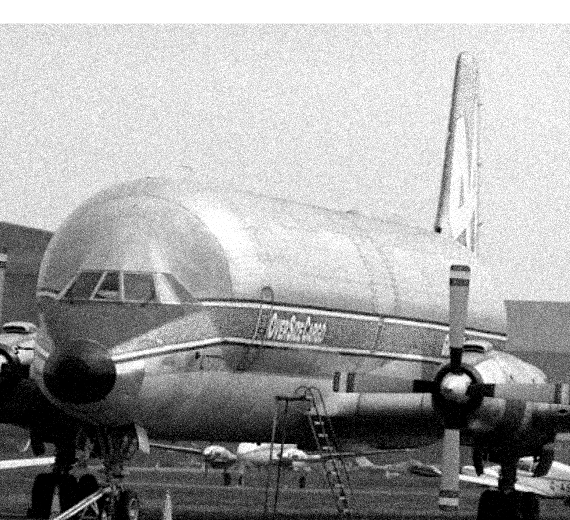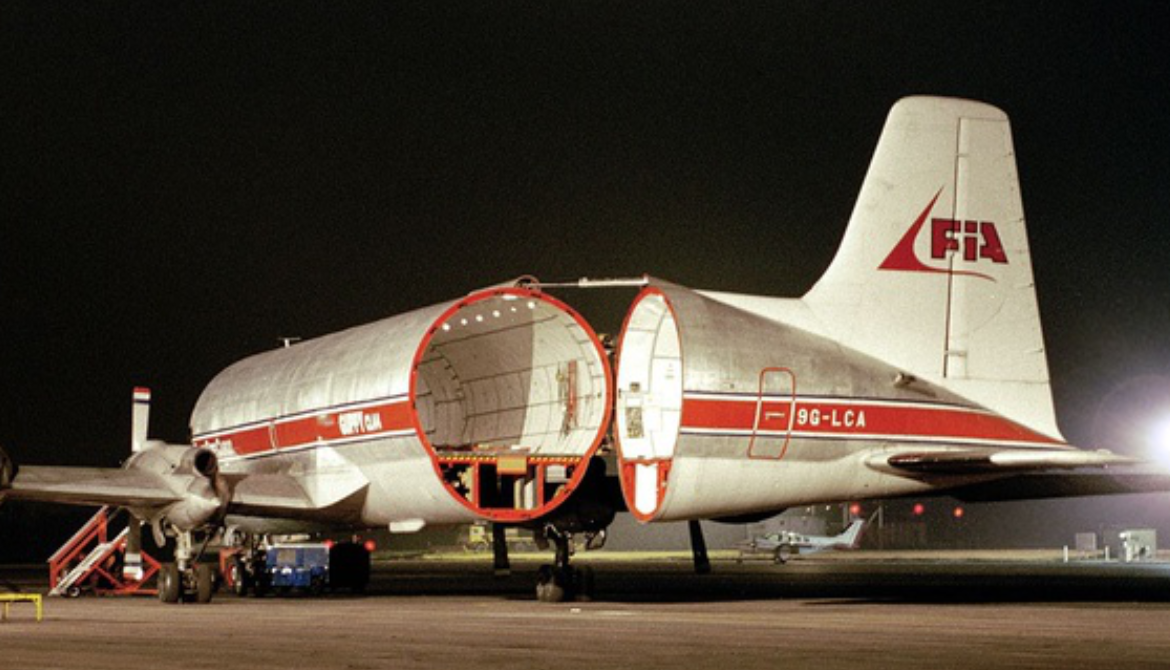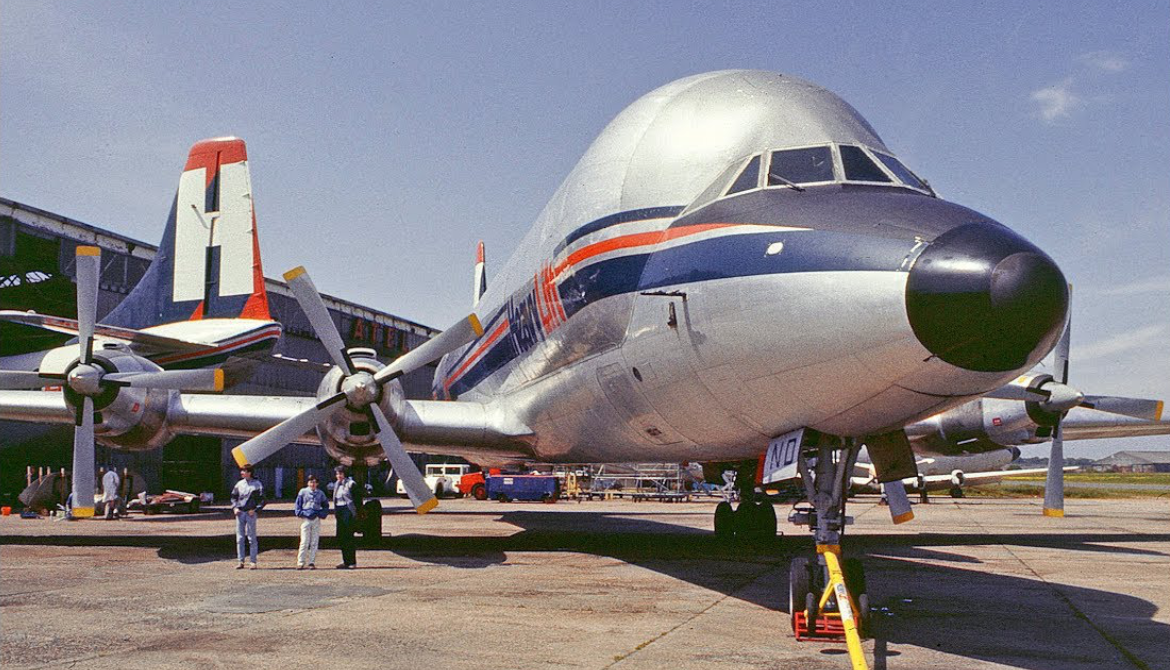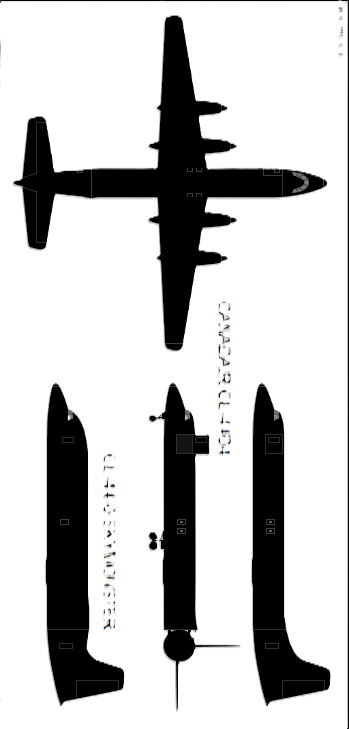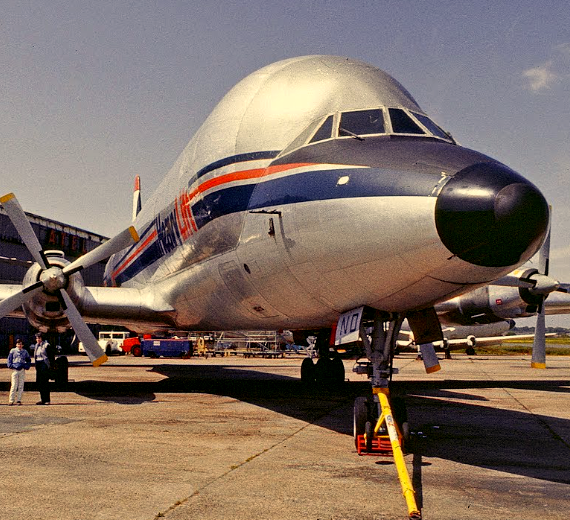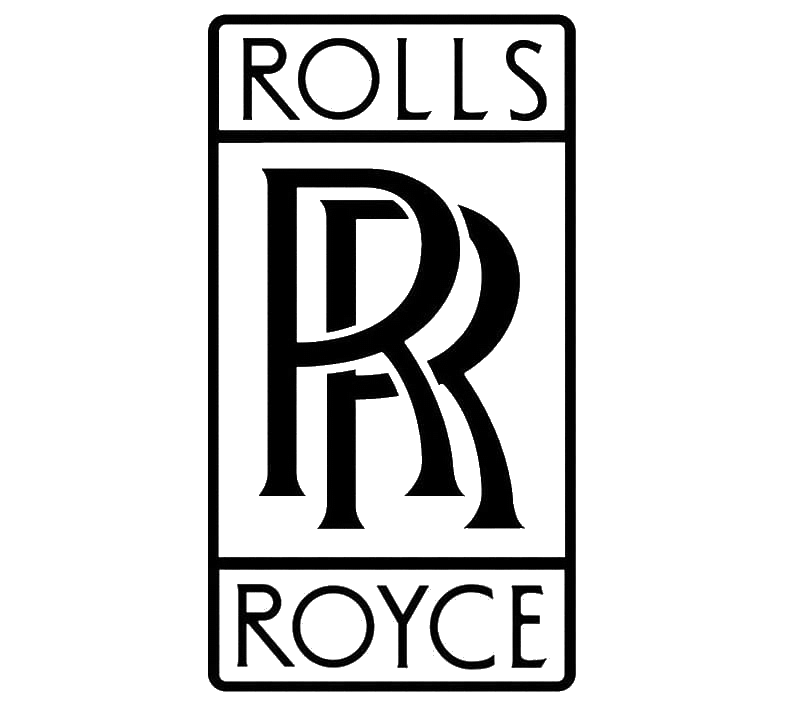Conroy Skymonster
(CL-44-0) Guppy
 |
|
| Role | Large outsize-cargo transport aircraft |
|---|---|
| Manufacturer | Conroy Aircraft |
| First flight | 1969 |
| Status | Retired |
| Primary users | Heavylift Cargo Transmeridian Air Cargo |
| Number built | 1 |
| Developed from | Canadair CL-44 |
| Career | |
| Registration | N447T, EI-BND, 4K-GUP, 9G-LCA, RP-C8023, N447FT |
| In service | 1970-1999, 2013-2022 |
.
History Conroy Skymonster
(CL-44-0) Guppy

The Conroy Skymonster (CL-44-0) is a 1960s United States specialized cargo aircraft based on the Canadair CL-44 freighter, with an outsize fuselage.
The aircraft was designed by John M. Conroy as a transport aircraft that could be used to ferry three Rolls-Royce RB.211 jet engines from Belfast, Northern Ireland, to Palmdale, California, United States. The engines were to be installed on the Lockheed L-1011 TriStar airliner. The Skymonster was derived from a Canadair CL-44 freighter, in turn a derivative of the Bristol Britannia. It features an enlarged fuselage, like the Aero Spacelines Mini Guppy, which was produced by Jack Conroy's previous company, Aero Spacelines.
The conversion was performed outdoors, under covered scaffolding, at the Santa Barbara California airport. The nose section was built using foam covered with fiberglass, while the larger fuselage was constructed using conventional aluminum structure.
Operational history


After a long period of storage, activity was again seen around the Skymonster during the summer of 2013. In July 2013 it was registered N447FT in the United States to a Jordan Harlan Wayne, but has since been deregistered.
As of 21 May 2021 the Skymonster remains at Bournemouth International Airport, moved from its original parking spot to make way for airport development.
0
KmCeiling
0
KmMax RANGE
0
Km/hAircraft Speed
0
Max Crew
Photo Gallery
Canadair / Bombardier
Conroy Skymonster
(CL-44-0) Guppy


Canadair / Bombardier
Conroy Skymonster
(CL-44-0) Guppy
General Info
-
-
- Crew: 2 pilots, 1 flight engineer plus loadmasters as required.
- Capacity: 160 passengers and 66,048 lb (29,959 kg) useful load
- Length: 136 ft 11 in (41.73 m)
- Wingspan: 142 ft 4 in (43.37 m)
- Height: 36 ft 8 in (11.18 m)
- Wing area: 2,075 sq ft
-
Powerplant
-
- Empty weight: (40,348 kg)
- Max takeoff weight: (95,000 kg)
- Powerplant: 4 × Rolls-Royce Tyne 515/50 turboprops, 5,730 shp each
- Propellers: 4-bladed variable pitch propellers
-
Performance
- Maximum speed: (670 km/h
- Cruise speed: 401 mph (646 km/h
- Range: 5,588 mi (8,993 km
- Service ceiling:(9,100 m)
.
Links to Youtube & Others
The rollout of the Yukon was a near-disaster because the prototype could not be pushed out of the hangar since the vertical fin could not clear the hangar doors
Canadair
Canadair
CT-114 Tutor
The RCAF specified the CL-44 to be equipped with Bristol Orion engines
Youtube Link
The CC-106 Yukons retired in March 1971 and were replaced by the CC-137 (Boeing 707)
